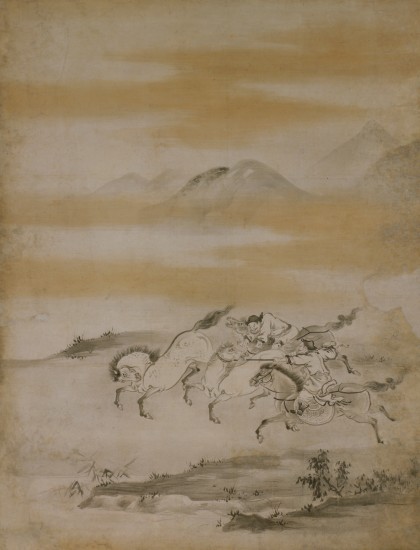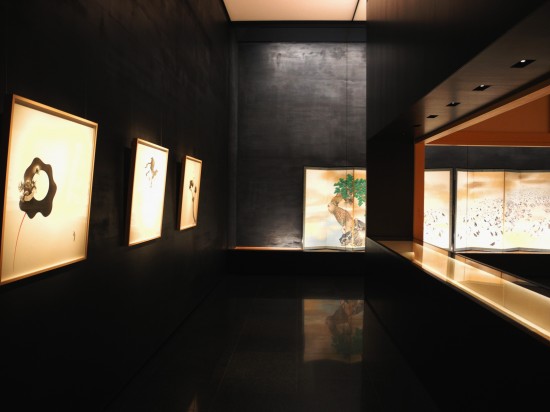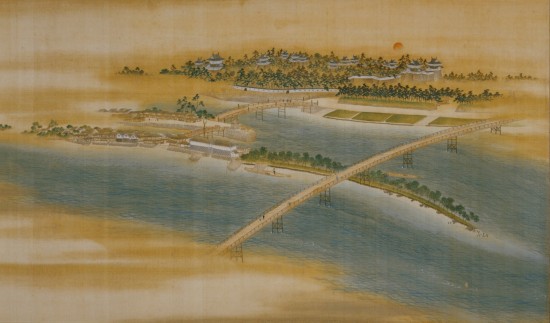From Hara Museum ARC, Gunma
The countdown to the New Year has begun, and so has the new exhibition at the Kankai Pavilion. New Year’s Sketches opened on Friday, November 22.
Of the traditional 24 seasons in which the Japanese divide the year, we are now in shosetsu, or the “season of little snow.” It is about this time that the leaves fall and we get a growing sense that winter is coming.
The Kankai Pavilion is in full New Year mode, with paintings and handcrafts emblazoned with auspicious imagery that Japanese have cherished since olden times.

Wild horses and Horsemen(Paintings used for wallpaper and fusuma (Japanese sliding door) at Nikko-in Mi’idera temple, four hanging scrolls, Momoyama – Edo period
Japanese decorate their homes with such symbols during New Year’s and other seasonal festivals with the wish that they bring the fortunes that they symbolize. They include the horse (the zodiac animal for 2014), the rising sun and pine trees, and the crane. These and other auspicious imagery appear on hanging scrolls and standing screens selected from the Hara Rokuro Collection, together with pieces of contemporary art from the Hara Museum Collection.

Hiroe Saeki, Untitled, 2009 / A hundred cranes, Mori Tetsuzan, pair of six-fold screens, Edo period

Landscape of Yodo River, Maruyama Okyo, hand scroll, Edo period
We invite you to come and enjoy the special ambiance and beauty of these works, and to make a wish for good fortune in the New Year!
[Featured Works]
Traditional Art: Wild horses and horsemen (part of paintings used for wallpaper and sliding doors at Nikko-in guest hall in Mi’idera temple), Kano school, four hanging scrolls, Momoyama – Edo period / Landscape of Mt. Fuji, Shiba Ko′kan, hanging scroll, Edo period / Landscape of Yodo River, Maruyama Okyo, hand scroll, Edo period / A hundred cranes, Mori Tetsuzan, pair of six-fold screens, Edo period / Seaside landscape with sunrise, Yokoyama Taikan, hanging scroll, Meiji period / Pair of Satsuma ware sake bottles with their portable case, maki-e on lacquer, Edo – Meiji period and others.
Contemporary Art: Toshimitsu Imai, Sasameyuki, 1984 / Noe Aoki, tateyama, 2007 / Hiroe Saeki, Untitled, 2009 and others.
